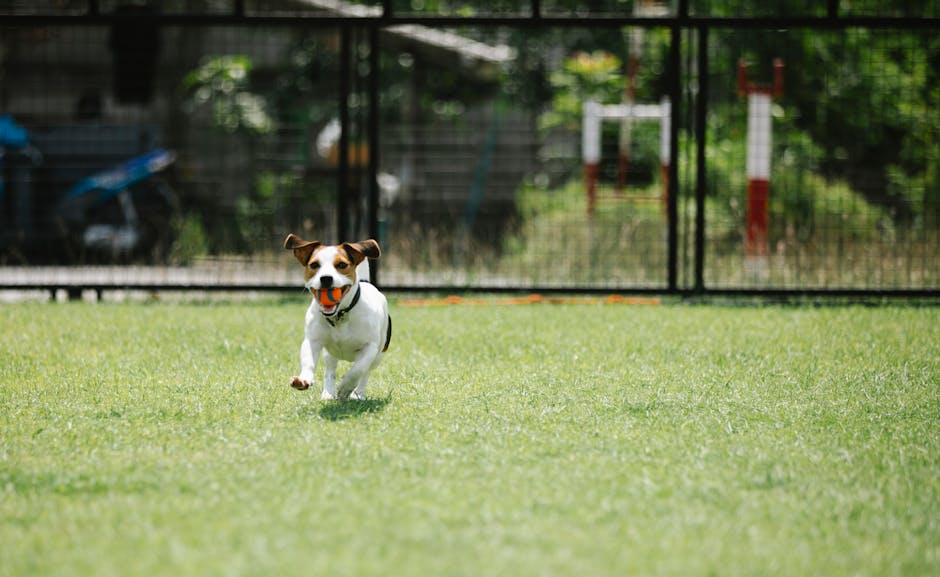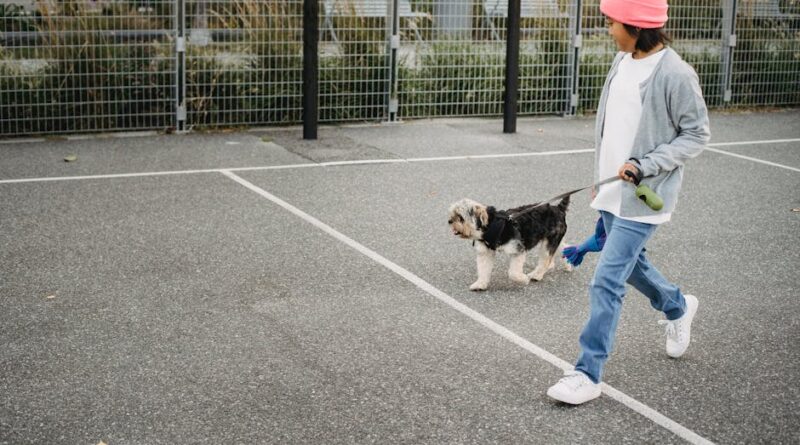The Importance of Exercise for Little Dogs
When we think about exercise, we often picture large dogs running around a park, chasing after balls or frisbees. However, the importance of exercise for little dogs should not be underestimated. Just like their bigger counterparts, small breeds also need physical activity to stay healthy, both physically and mentally. In this comprehensive guide, we will delve into the significance of exercise for little dogs, exploring why it is essential, how it benefits them, and what types of activities are most suitable for these pint-sized pups.
The Physical Benefits of Exercise

One of the primary reasons why exercise is crucial for little dogs is the physical benefits it provides. Regular physical activity can help maintain a healthy weight, improve cardiovascular health, and strengthen muscles and bones. For small breeds, which are prone to obesity and joint problems, staying active is especially important.
Exercise also helps little dogs burn off excess energy, reducing the likelihood of behavioral issues such as excessive barking, chewing, or digging. It can also improve their overall coordination and balance, making them more agile and less prone to injuries.
Furthermore, engaging in physical activities can help little dogs socialize with other pets and humans, promoting positive interactions and reducing anxiety and aggression. Overall, regular exercise plays a vital role in keeping small breeds happy, healthy, and well-rounded.
The Mental Benefits of Exercise

In addition to the physical benefits, exercise also offers numerous mental advantages for little dogs. Just like humans, dogs need mental stimulation to stay sharp and engaged. Regular exercise can help prevent boredom and alleviate stress and anxiety, leading to a happier and more content pup.
Physical activities that involve problem-solving or learning new skills, such as agility training or puzzle games, can keep little dogs mentally sharp and improve their cognitive abilities. These activities not only provide mental stimulation but also strengthen the bond between the dog and their owner, enhancing communication and trust.
Moreover, exercise releases endorphins, also known as the “feel-good” hormones, which can boost the dog’s mood and overall well-being. Little dogs that get regular exercise are often more relaxed, confident, and well-adjusted, making them better companions and family members.
Types of Exercise for Little Dogs

When it comes to exercising little dogs, there are plenty of options to choose from. The key is to find activities that are appropriate for their size, energy level, and breed characteristics. Here are some popular types of exercise that are well-suited for small breeds:
Walking

Walking is one of the simplest and most effective forms of exercise for little dogs. It allows them to explore their surroundings, get fresh air, and burn off energy at their own pace. Regular walks can improve cardiovascular health, build muscle strength, and provide mental stimulation for small breeds.
It is important to adjust the length and intensity of the walk based on the dog’s age, size, and fitness level. Short, frequent walks are usually more beneficial for little dogs than one long walk. Additionally, incorporating variety into the walking route can keep the dog engaged and prevent boredom.
Playtime
Playtime is another excellent way to exercise little dogs while having fun. Games like fetch, tug-of-war, or hide-and-seek can provide physical and mental stimulation for small breeds. Playing with toys or interactive puzzles can also keep them entertained and engaged.
When engaging in playtime activities, it is important to closely supervise the dog to ensure their safety. Avoid rough play or activities that could potentially cause injury, especially for delicate little dogs. Instead, focus on games that promote bonding and positive interactions between the dog and their owner.
Agility Training
Agility training is a popular form of exercise for little dogs that combines physical activity with mental stimulation. It involves navigating through obstacle courses, such as tunnels, weave poles, and jumps, to improve coordination, balance, and agility.
Agility training can be a fun and challenging activity for small breeds, as it allows them to use their natural instincts and intelligence. It also provides an opportunity for the dog to bond with their owner and build trust and communication. However, it is essential to start slowly and gradually increase the difficulty of the obstacles to prevent injuries.
Swimming
Swimming is a low-impact exercise that is particularly beneficial for small breeds with joint problems or mobility issues. It offers a full-body workout, strengthening muscles, improving cardiovascular health, and providing mental stimulation for little dogs. Swimming can also help them cool off during hot weather and relieve stress and anxiety.
When introducing a little dog to swimming, it is crucial to ensure they are comfortable in the water and have proper supervision at all times. Use a life jacket if needed, and gradually introduce them to different water environments to prevent fear or anxiety. Swimming can be a rewarding and enjoyable activity for little dogs of all ages.
Expert Opinions
According to Dr. Rachel Barrack, a licensed veterinarian and certified veterinary acupuncturist, “Exercise is just as important for little dogs as it is for larger breeds. Small breeds may have different exercise requirements, but they still need physical activity to stay healthy and happy. Regular exercise can help prevent obesity, joint problems, and behavioral issues in little dogs, making it a crucial aspect of their overall care.”
Dr. Barrack recommends incorporating a variety of exercises into a little dog’s routine to keep them engaged and motivated. She emphasizes the importance of finding activities that the dog enjoys and adjusting the intensity and duration based on their individual needs. By making exercise a fun and positive experience, owners can help their little dogs stay active and healthy for years to come.
Conclusion
In conclusion, the importance of exercise for little dogs cannot be overstated. Physical and mental activities play a crucial role in keeping small breeds healthy, happy, and well-balanced. Whether it’s going for a walk, playing games, participating in agility training, or swimming, there are plenty of ways to keep little dogs active and engaged.
By understanding the physical and mental benefits of exercise, as well as the different types of activities that are suitable for small breeds, owners can provide their furry friends with a fulfilling and enriching lifestyle. Regular exercise not only improves the dog’s overall health and well-being but also strengthens the bond between the dog and their owner, fostering a deeper connection and mutual trust.
So, the next time you see a little dog wagging its tail and eagerly waiting for a walk or a game of fetch, remember the positive impact that exercise can have on their life. By prioritizing their physical and mental fitness, you are not only ensuring their longevity and happiness but also creating lasting memories and experiences that you both can cherish for years to come.




